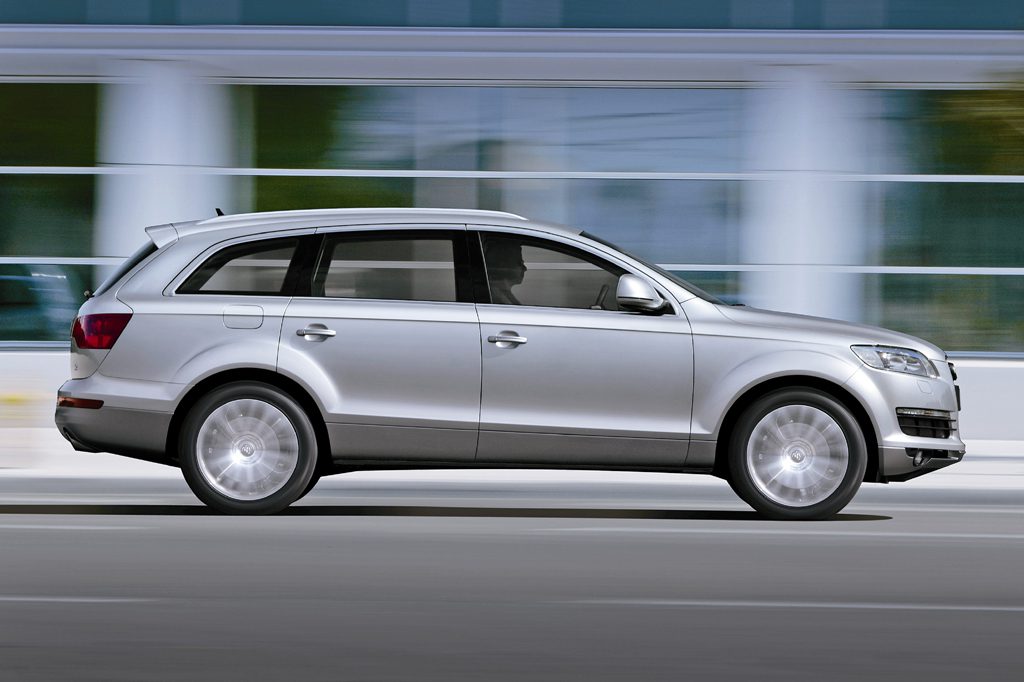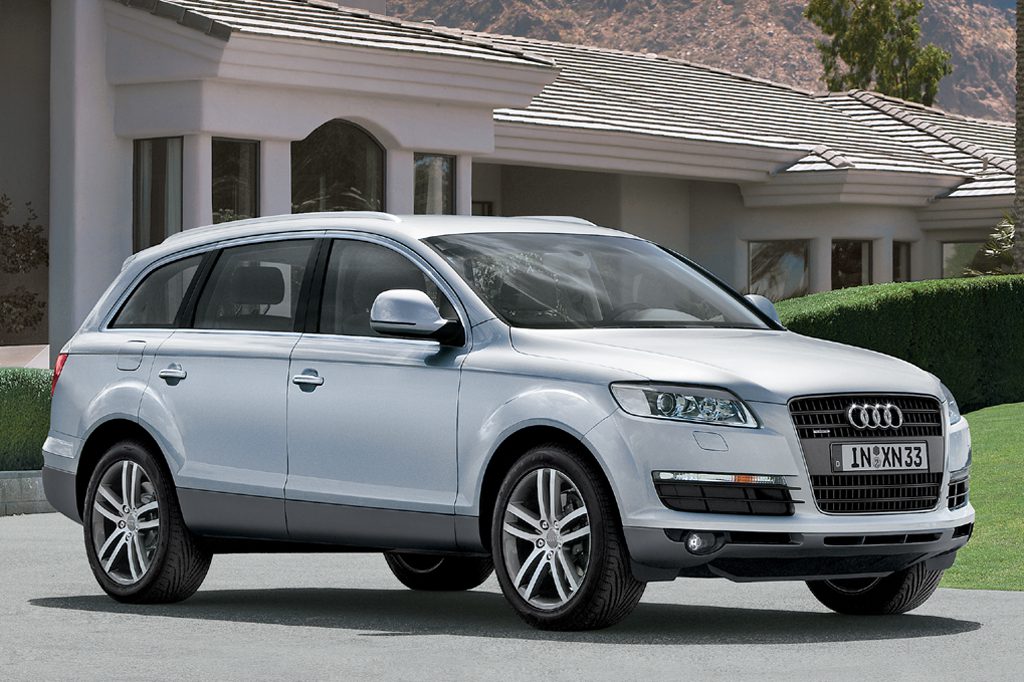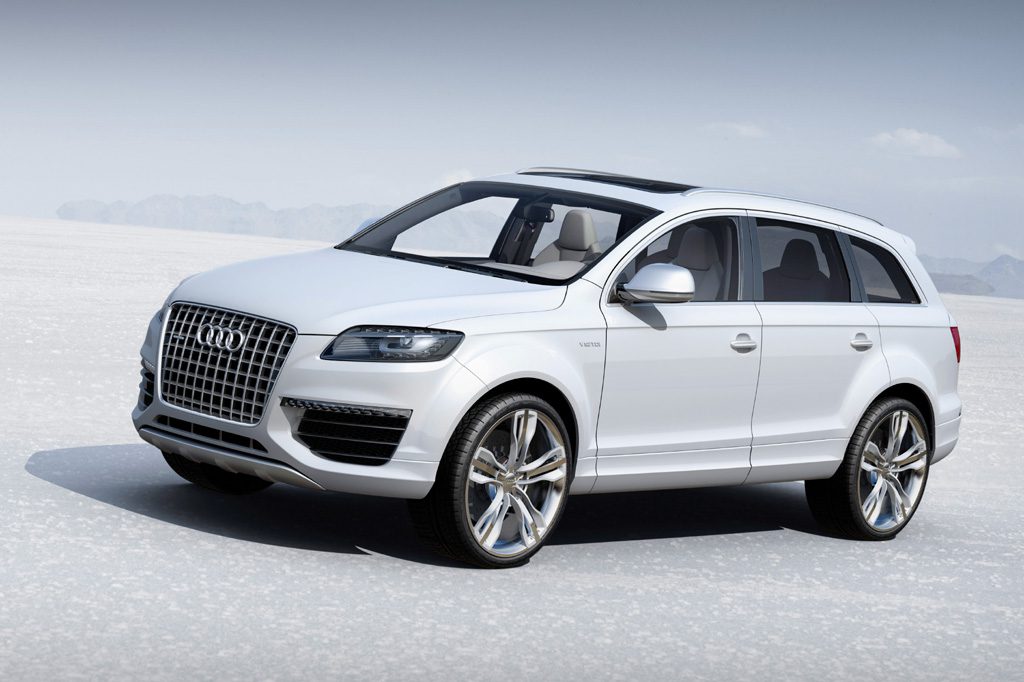| Premium large SUV; Built in Germany |
|
|
| Good condition price range: $12,100 – $57,100* |

2008 Audi Q7

2008 Audi Q7

2008 Audi Q7

2008 Audi Q7

2008 Audi Q7
| Pros: |
|
| Cons: |
|
Recognizing that vehicles in this class are more about coddling occupants than carrying cargo, and need to make a style statement in the process, the Q7 fits the premium large SUV bill. Still, the Q7’s third-row room, comfort, and access are hostile to adults. Fuel economy with the 4.2-liter V8 is frightful. Even so, the Q7 earns our Recommended nod for mechanical finesse and terrific all-weather road manners. Audi design and workmanship also appeal.
Overview
Audi’s first sport-utility vehicle was loosely based on the Touareg from parent-company Volkswagen. Equipped with standard all-wheel drive, the Q7 differed from the VW Touareg in styling, equipment, and price. Larger in size, the Q7 seated up to seven, versus the Touareg’s five-passenger capacity. Rivals included the Cadillac Escalade and Mercedes-Benz GL-Class.
Two versions of the Q7 were offered: the 3.6 model with a 280-horsepower V6, and the 4.2 with a 350-horsepower V8. Both had a six-speed automatic transmission and Audi’s quattro all-wheel drive, without low-range gearing. In 2009 a turbodiesel engine was added. Antilock braking and traction/antiskid control with rollover sensors were standard. So were front side airbags and curtain side airbags for all seating rows. Second-row side airbags were optional, as were 20-inch wheels and a driver-adjustable air suspension with height control.
Each Q7 model came in base or Premium form. The 4.2 Premium added such conveniences as rear obstacle detection and four-zone automatic climate control. All Q7s included Audi’s MMI (Multi Media Interface). It used a dashboard screen and a console knob, and switches to set audio, navigation, suspension, and many other functions. Among available Q7 features were a voice-activated navigation system with rearview camera, adaptive cruise control, keyless entry and starting, and a three-panel sunroof. Also available was Audi’s Side Assist sensor system, which used flashing lights in the side mirrors to warn of vehicles in blind spots.
Yearly Updates
| 2008 Q7 In its second season on the market, Audi’s Q7 earned some standard-equipment and option revisions. The base 3.6 model added leather seating surfaces up front. The 3.6 Premium model included a power tailgate, third-row seating, and Audi’s parking system with a rearview camera. Audi’s DVD-based navigation system, Advanced key system, and 20-inch alloy wheels went on the 4.2 Premium wagon. |
| 2009 Q7 The 2009 Audi Q7 lineup gained a new turbodiesel model. Added was the 3.0 TDI quattro with a 221-hp 3.0-liter turbodiesel V6. |
| 2010 Q7 The 2010 Audi Q7 received slightly freshened styling and a revised version of Audi’s MMI (Multi Media Interface). |
| 2011 Q7 The 2011 Audi Q7 received new gasoline powertrains and a new transmission for its diesel model. The V6 and V8 gas engines were replaced by a 3.0-liter supercharged V6 with 272 horsepower in the 3.0T Premium, 333 in the 3.0T S Line Prestige. All engines, including the carryover turbodiesel, were mated to a new eight-speed automatic transmission. |
| 2012 Q7 The only change of note to the 2012 Audi Q7 was a slight power increase for its standard 3.0-liter supercharged V6, which went from 272 horsepower to 280. |
| 2013 Q7 Q7 gained a redesigned turbodiesel engine for 2013. |
| 2014 Q7 The Q7 had few changes for 2014. |
